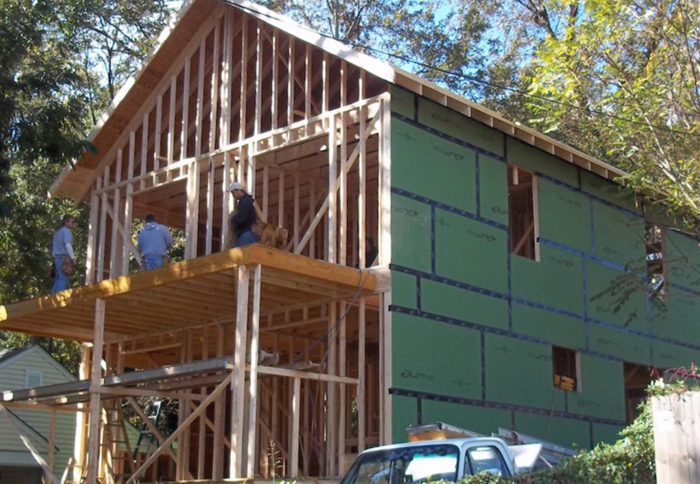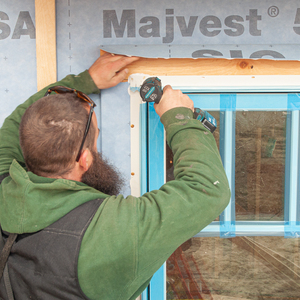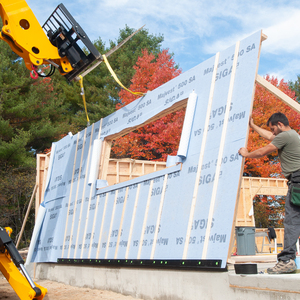
This post has been updated.
The organization that publishes the country’s most influential energy conservation and building codes has proposed rule changes that would leave key decisions to a single committee while cutting thousands of municipal officials out of direct voting.
Critics say the changes under consideration by the International Code Council (ICC) would put too much power in the hands of a building industry that has resisted requirements for more energy efficient buildings in the past. The dispute may look arcane, but the outcome will affect how the widely used International Energy Conservation Code (IECC) and part of the International Residential Code (IRC) are written in the future.
Those codes are updated every three years in a process that until now has given thousands of government officials the chance to vote online. Under revised rule-making now under consideration, however, code changes would be left in the hands of a committee whose exact makeup has yet to be announced. Local government officials who enforce the code could make suggestions, but they lose a direct say in shaping the requirements.
The ICC has not released all the details of how the new process would work, and it’s not clear just when that will happen. The ICC Board of Directors heard verbal testimony last week, but made no decisions, said Mike Pfeiffer, a professional engineer and senior vice president of technical services.
“The board is reviewing all the commentary and will meet again in a few weeks to continue deliberations,” Pfeiffer said in an email. “No decision has been made yet.”
Pfeiffer said the proposal to move ahead with a “standards development process” rather than the code rewriting process now in use originated with the ICC’s Appeals Board and the Board Committee on the Long Term Code Development Process. “The intent of the proposal is to strengthen the IECC and its adoptability,” he said.
Scores of written comments filed with the ICC during its public comment period see it otherwise. The dispute has become messy enough to attract the attention of a U.S. House of Representatives committee on energy, which has now requested information and documents from the ICC.
Typical of the objections to the proposed changes is a letter from Robert Ivy, the executive vice president and CEO of the American Institute of Architects. Ivy said that voting public officials were key to the changes that will increase energy efficiency in the 2021 IECC by almost 50% over the 2006 code. They would now be left out in the cold.
“During this period, the Governmental Members have rejected all proposals to roll back or trade away energy efficiencies in the code,” Ivy wrote. “Others who did not ‘win’ on the issue are proposing this ‘change’ to further undermine the process to overturn their perceived losses.”
In its letter, the American Council for an Energy Efficiency Economy (ACEEE) said the change will “greatly reduce the input” of government member voting representatives and urged the board not to rush into any “change of this magnitude.”
Christopher Perry, the ACEEE’s manager of codes and standards, warned that under revised rules, it would be crucial that the ICC committee (or committees) responsible for updating the codes not be dominated by any single interest category.
“Committees must be comprised of members that actively support energy efficiency and sustainability (the mission of the committee),” he wrote, “to make reasonable progress in the standard each cycle.”
More pointed is a column by Justin Gillis posted by The New York Times that accuses the National Association of Home Builders (NAHB), the largest lobbying group for residential builders in the country, with “trying to monkey around with the rules meant to protect buyers and ensure that new homes meet the highest standards.”
“The builders’ short-term interest is to weaken the codes, which cuts their costs,” Gillis said. “The interest of home buyers and of society at large is exactly the opposite: Strong building standards, even when they drive up the initial cost of a house, almost always result in lower costs over the long run.”
Gillis said that a strong turnout in voting by government officials in favor of energy provisions in the 2021 code caught builders off-guard and prompted the effort to rewrite the rules.
“The builders are now trying to upend the voting process that led to the more stringent rules,” he said. “They are trying to rush through a rewrite of the rules to block future voting by state and local governments. The builders’ lobby wants the energy provisions of the model code put under the control of a small committee, which the builders would likely be able to dominate.”
What builders have to say
NAHB doesn’t see it that way. In its letter to the ICC, NAHB Chairman John Fowke supported the change and refuted claims that government members who now vote on code updates will be left out. Fowke said he expected government members to be “well represented” on the new committee. Further, the process would allow anyone, including government members, to participate by submitting proposals and commenting to the committee, he said.
Membership of the proposed committee has not been determined. But, Pfeiffer said, it would be “balanced in accordance with our procedures which are in compliance with the ANSI Essential Requirements, the gold standard for standards development.” No single interest would make more than a third of the membership, Pfeiffer said.
Fowke said the committee approach would “allow for more deliberative discussions and exchange of ideas” and result in a more “balanced and cost-effective code.” He argued that the current process that includes an online vote allowed “political manipulation of the outcome—an end result that is neither desirable nor appropriate.”
NAHB represents more than 140,000 members and is affiliated with more than 700 state and local home builders’ groups, most of whom use the IECC, Fowke said. And NAHB members will build 80% of all new housing units in 2021.
“Given the current housing affordability crisis, [they] need to be able to do so in a cost-effective manner,” he said.
In response to charges that the new committee would be weighted toward builders who don’t want to spent any more on new houses than necessary, Fowke said committee members will include a range of interests, not just builders with a vested financial stake in the outcome.
Builder groups often point to added construction costs forced by tougher energy provisions—more insulation, better windows and tighter building enclosures. These requirements make it more difficult for people to afford new houses, wrote Randy Strauss, a custom home builder in northern Ohio.
“In recent years we have watched as the energy code requirements appear to be escalating to a point that no longer benefit our clients as a matter of investment,” he wrote. “The recent changes to the 2021 energy code will be costly to implement and have serious consequences in regard to affordability for my clients, without demonstrating a legitimate return on their investment.
Why the discussion matters
Building and energy codes published by the ICC must be adopted by local and state authorities before they can be enforced, and the rules may be modified to suit local conditions. In other words, just because the IECC or the IRC requires so much insulation in the walls, for example, doesn’t make it so unless local officials go along. The latest IECC codes typically are rolled into the energy chapter of the IRC, which also must be adopted by states in order to become law.
Some states, in fact, are still using building codes adopted years ago while updated, and more stringent, requirements go unenforced. The U.S. Department of Energy’s Energy Efficiency & Renewable Energy office, which keeps track of code adoption, says there are still eight states with no statewide code, while a total of 32 states are using the 2009 or earlier version of the IECC. Only 11 states have adopted the 2018 IECC with the 2021 about to be published.
But for some states, updated codes are very important in shaping state energy policy.
In an email to the ICC board, Timothy Higgins, the town administrator for Lincoln, Massachusetts, opposed the change, noting that, “Massachusetts is statutorily required to begin the adoption of the new I-Codes within one year of publication … Lincoln follows the Code and is invested in safe, healthy, and efficient buildings.”
“The IECC is of particular importance to us because it produces more energy-efficient buildings while also positively benefiting vulnerable residents, public health outcomes, building operational costs, greenhouse gas emissions reductions, resilience, and safety,” Higgins said. “We strongly urge you to uphold the current role of local government stakeholders in IECC final voting.”
Even the state of California, which uses its own energy efficiency standards rather than the IECC, opposed the change and pointed to the transparent and open public process the state uses. “Our state is better served as a result of this meaningful, properly contextualized dialogue and the accountability it engenders,” wrote Andrew McAllister, commissioner of the California Energy Commission.
“The IECC action you are considering would plainly move in the opposite direction,” he continued, “towards opacity and lack of accountability to the very states that, presumably, would adopt and enforce it.”
This dispute has a history
The NAHB’s influence over evolving energy codes was the subject of an earlier New York Times report that disclosed a deal between the builders’ lobby and the ICC. The 2019 article said that the previously unreported pact gave NAHB more than a third of the voting membership on a key committee in return for the NAHB’s pledge of support on the model building codes the ICC published.
At the time, critics complained that even though four of 11 seats on the committee that developed new versions of the IRC was not a majority, it was enough to block efforts to require greater energy efficiency in the codes.
A former board member of the NAHB said the agreement allowed home builders to take the ICC hostage and block changes aimed at better energy efficiency.
The ICC defended the arrangement and complained that the existence of the arrangement was generally known. But it refused to release the full text of the agreement between it and NAHB. At the time, ICC Vice President for Communications Whitney Doll said that industry representatives did not make up a majority of any code-writing committee.
Plus, she said, all final votes on code changes are made by government member representatives with no financial stake in the outcome. Those are the very people, however, who will not be voting on energy code changes in the future if the ICC board puts its plan into effect.
That undisclosed agreement, called a Memorandum of Understanding, is still of some concern, said Cindy Schwartz, the AIA’s advocating managing director. In a telephone call, Schwartz said it’s not clear whether the memorandum is evidence of undue influence on the part of the building industry. “I don’t know that we know the answer to that,” she said.
But the AIA has “grave concerns” about efforts to weaken energy efficiency standards and the possibility that there could be some attack on the gains that have been made so far. “It creates an unflattering picture,” she said.
Also of some concern to Schwartz and others is the speed at which these changes have been proposed. All of it has happened in the last couple of months, including the ICC decision just before the Christmas holidays to open the public comment period.
“It’s a little bit of a mystery,” she said of the origins of the proposed change. “It’s not clear how it became such a big deal so quickly.”
Congress is showing interest in the dispute
Last week, members of the House Energy and Commerce Committee sent a letter to the ICC requesting information about the IECC and, in particular, about “reports that ICC has an undisclosed written agreement with the National Association of Home Builders allowing NAHB disproportionate control over the code development process.”
The letter came from committee Chairman Frank Pallone Jr., D-NJ, Energy Subcommittee Chairman Bobby Rush, D-IL, and Oversight and Investigations Subcommittee Chair Diana DeGette, D-CO.
Committee members said they were not only interested in the memorandum but also about the proposed changes in how the codes will be written in the future. “This has raised concerns among stakeholders that state and local officials could be effectively eliminated from providing meaningful input on future revisions to energy building codes,” the letter says.
The panel has asked why the decision was made to guarantee seats on ICC committees to NAHB. It also wants copies of any written materials, including any memorandum of understanding between the ICC and NAHB, and asked whether the ICC has entered into an agreement with any other organization guaranteeing representation. Also, the committee wants “an explanation of the rationale” for the proposed code writing changes.
The committee requested information by Feb. 2.
Asked how the ICC planned to respond to those requests, Pfeiffer said, “The Code Council will continue to be open, transparent and responsive, as it always has.”
Scott Gibson is a contributing writer at Green Building Advisor and Fine Homebuilding magazine.
Weekly Newsletter
Get building science and energy efficiency advice, plus special offers, in your inbox.















3 Comments
The NAHB has a weird posture on energy conservation that I can't understand. The home building industry has such a terrible reputation for quality and energy consumption that is pervasive across the market. The entire current generation is trying to avoid home ownership because of these liabilities. So why wouldn't NAHB want a better code to help improve their reputation?
$$$$$$ is the answer to your question. For the production builders it is all about land control. They have the resources (unlimited capital) to buy up large blocks of development property and can then build to company specifications. The demand will be there for the new homes as the location is desirable. Also, even somewhat leaky homes will be affordable to heat when on the natural gas grid. Annual property taxes will be 5 or 6k so a $1.500.00 per year gas bill is overlooked.
Any changes to the building and energy codes means a lower bottom line for the large builders. They will also need a more highly trained work force to carry out the new energy code requirements, skilled tradespeople are in short supply.
I worked with a local production builder for 15 years here in Minneapolis. The attention to detail and quality of workmanship in insulating and air sealing was impressive. They had the best of the best to do this work. Was not privy to the ACH50 for these homes but I would say easily below 1.5 ACH50. This is twice as tight as MN energy code requires.
I know you're right, but it's like the auto industry arguing that nobody really wants seatbelts, airbags, disc brakes, tail lights, air conditioning, and better than 9 mpg.
It's hard to believe our elected officials aren't all on the take with their continued support of such miserably poor home construction.
Log in or create an account to post a comment.
Sign up Log in